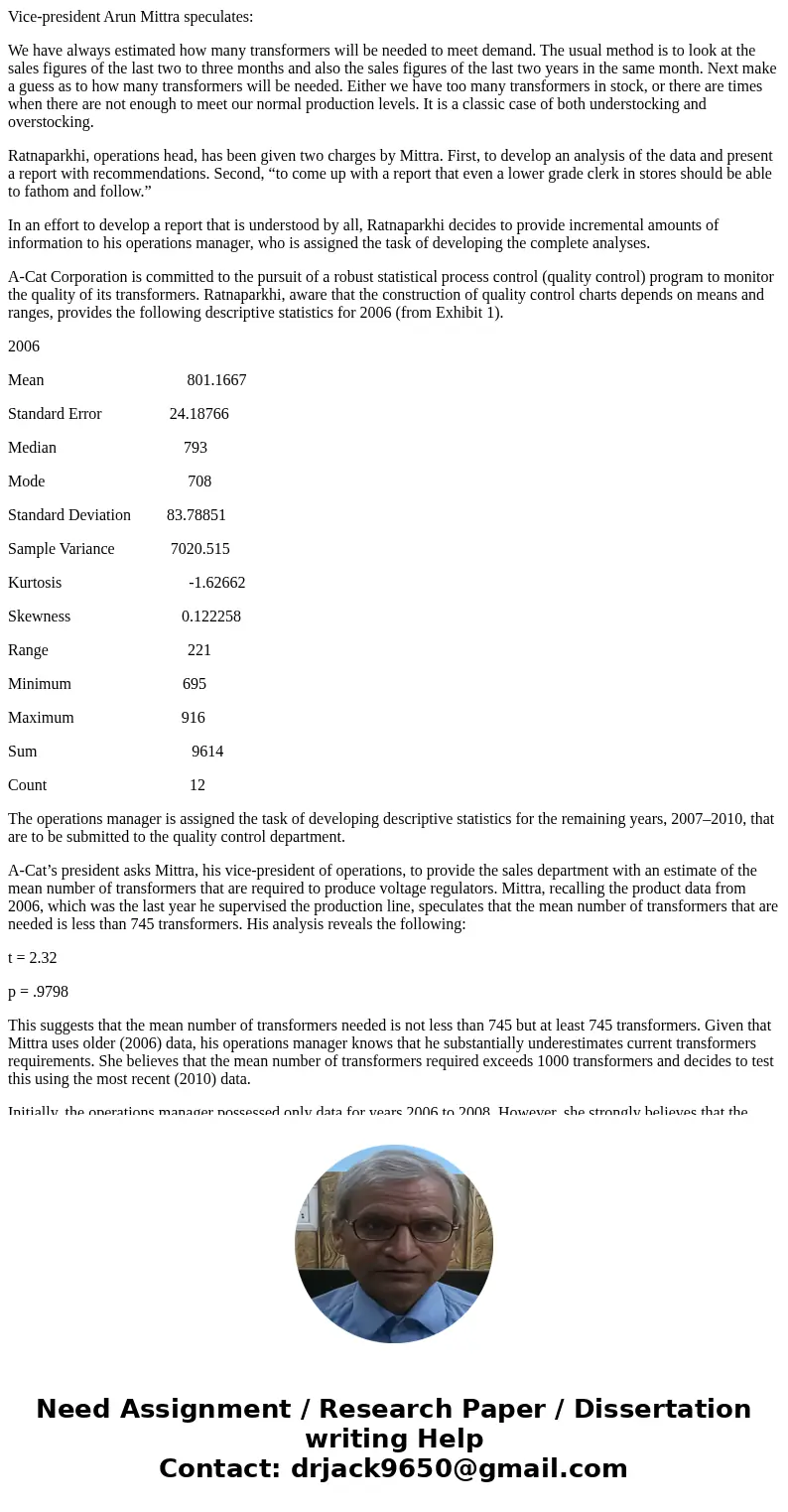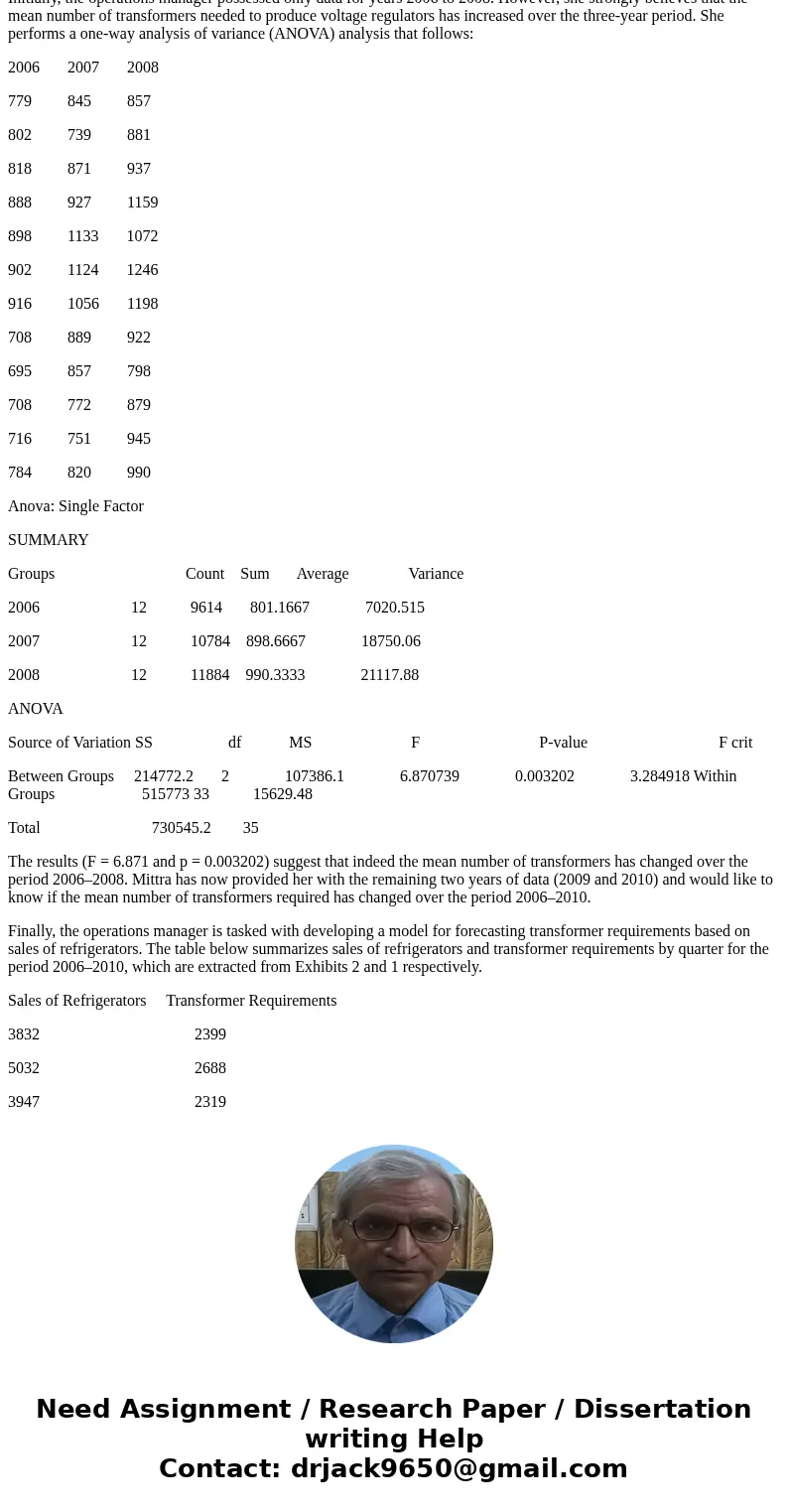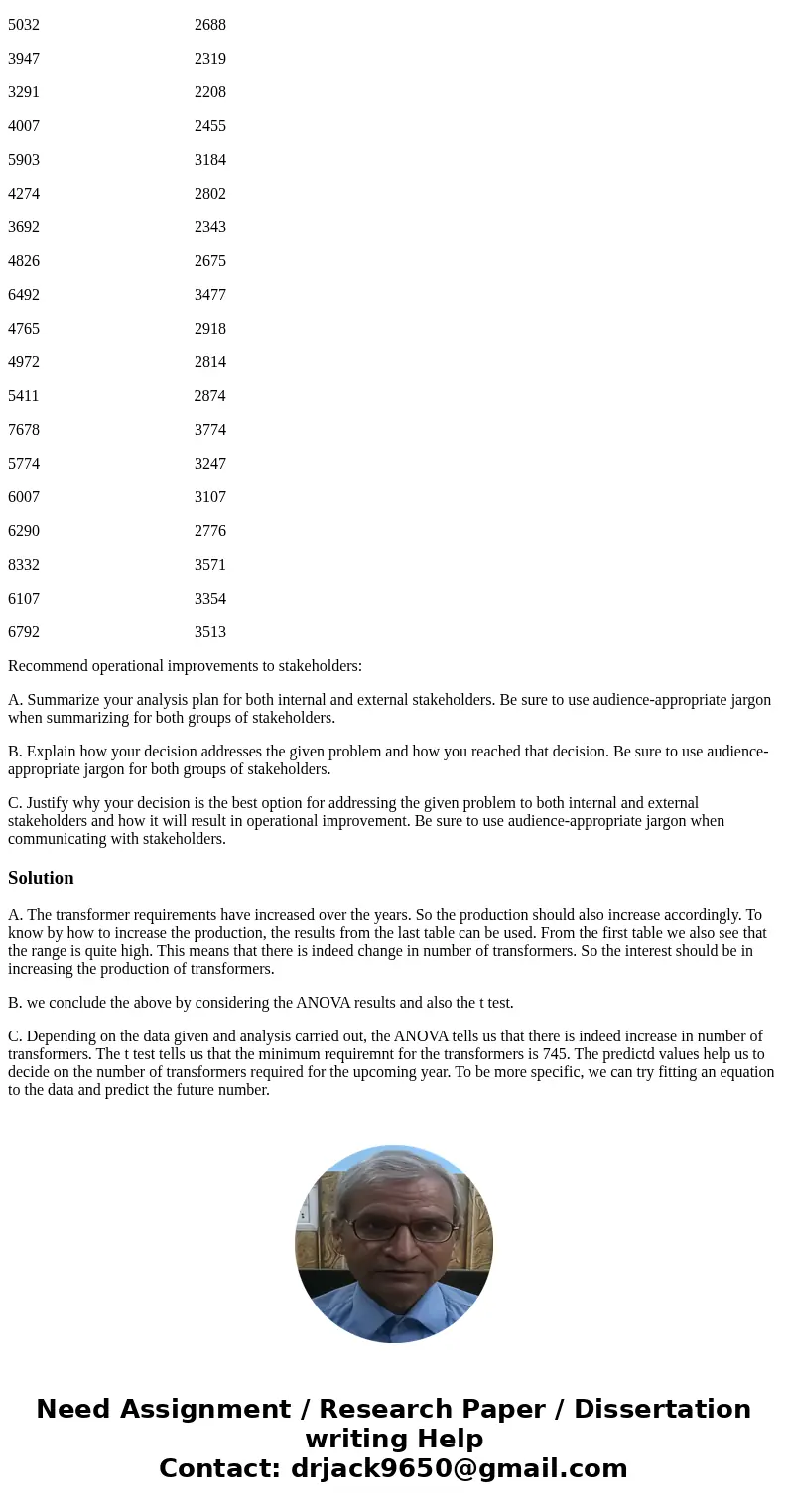Vicepresident Arun Mittra speculates We have always estimate
Vice-president Arun Mittra speculates:
We have always estimated how many transformers will be needed to meet demand. The usual method is to look at the sales figures of the last two to three months and also the sales figures of the last two years in the same month. Next make a guess as to how many transformers will be needed. Either we have too many transformers in stock, or there are times when there are not enough to meet our normal production levels. It is a classic case of both understocking and overstocking.
Ratnaparkhi, operations head, has been given two charges by Mittra. First, to develop an analysis of the data and present a report with recommendations. Second, “to come up with a report that even a lower grade clerk in stores should be able to fathom and follow.”
In an effort to develop a report that is understood by all, Ratnaparkhi decides to provide incremental amounts of information to his operations manager, who is assigned the task of developing the complete analyses.
A-Cat Corporation is committed to the pursuit of a robust statistical process control (quality control) program to monitor the quality of its transformers. Ratnaparkhi, aware that the construction of quality control charts depends on means and ranges, provides the following descriptive statistics for 2006 (from Exhibit 1).
2006
Mean 801.1667
Standard Error 24.18766
Median 793
Mode 708
Standard Deviation 83.78851
Sample Variance 7020.515
Kurtosis -1.62662
Skewness 0.122258
Range 221
Minimum 695
Maximum 916
Sum 9614
Count 12
The operations manager is assigned the task of developing descriptive statistics for the remaining years, 2007–2010, that are to be submitted to the quality control department.
A-Cat’s president asks Mittra, his vice-president of operations, to provide the sales department with an estimate of the mean number of transformers that are required to produce voltage regulators. Mittra, recalling the product data from 2006, which was the last year he supervised the production line, speculates that the mean number of transformers that are needed is less than 745 transformers. His analysis reveals the following:
t = 2.32
p = .9798
This suggests that the mean number of transformers needed is not less than 745 but at least 745 transformers. Given that Mittra uses older (2006) data, his operations manager knows that he substantially underestimates current transformers requirements. She believes that the mean number of transformers required exceeds 1000 transformers and decides to test this using the most recent (2010) data.
Initially, the operations manager possessed only data for years 2006 to 2008. However, she strongly believes that the mean number of transformers needed to produce voltage regulators has increased over the three-year period. She performs a one-way analysis of variance (ANOVA) analysis that follows:
2006 2007 2008
779 845 857
802 739 881
818 871 937
888 927 1159
898 1133 1072
902 1124 1246
916 1056 1198
708 889 922
695 857 798
708 772 879
716 751 945
784 820 990
Anova: Single Factor
SUMMARY
Groups Count Sum Average Variance
2006 12 9614 801.1667 7020.515
2007 12 10784 898.6667 18750.06
2008 12 11884 990.3333 21117.88
ANOVA
Source of Variation SS df MS F P-value F crit
Between Groups 214772.2 2 107386.1 6.870739 0.003202 3.284918 Within Groups 515773 33 15629.48
Total 730545.2 35
The results (F = 6.871 and p = 0.003202) suggest that indeed the mean number of transformers has changed over the period 2006–2008. Mittra has now provided her with the remaining two years of data (2009 and 2010) and would like to know if the mean number of transformers required has changed over the period 2006–2010.
Finally, the operations manager is tasked with developing a model for forecasting transformer requirements based on sales of refrigerators. The table below summarizes sales of refrigerators and transformer requirements by quarter for the period 2006–2010, which are extracted from Exhibits 2 and 1 respectively.
Sales of Refrigerators Transformer Requirements
3832 2399
5032 2688
3947 2319
3291 2208
4007 2455
5903 3184
4274 2802
3692 2343
4826 2675
6492 3477
4765 2918
4972 2814
5411 2874
7678 3774
5774 3247
6007 3107
6290 2776
8332 3571
6107 3354
6792 3513
Recommend operational improvements to stakeholders:
A. Summarize your analysis plan for both internal and external stakeholders. Be sure to use audience-appropriate jargon when summarizing for both groups of stakeholders.
B. Explain how your decision addresses the given problem and how you reached that decision. Be sure to use audience-appropriate jargon for both groups of stakeholders.
C. Justify why your decision is the best option for addressing the given problem to both internal and external stakeholders and how it will result in operational improvement. Be sure to use audience-appropriate jargon when communicating with stakeholders.
Solution
A. The transformer requirements have increased over the years. So the production should also increase accordingly. To know by how to increase the production, the results from the last table can be used. From the first table we also see that the range is quite high. This means that there is indeed change in number of transformers. So the interest should be in increasing the production of transformers.
B. we conclude the above by considering the ANOVA results and also the t test.
C. Depending on the data given and analysis carried out, the ANOVA tells us that there is indeed increase in number of transformers. The t test tells us that the minimum requiremnt for the transformers is 745. The predictd values help us to decide on the number of transformers required for the upcoming year. To be more specific, we can try fitting an equation to the data and predict the future number.



 Homework Sourse
Homework Sourse